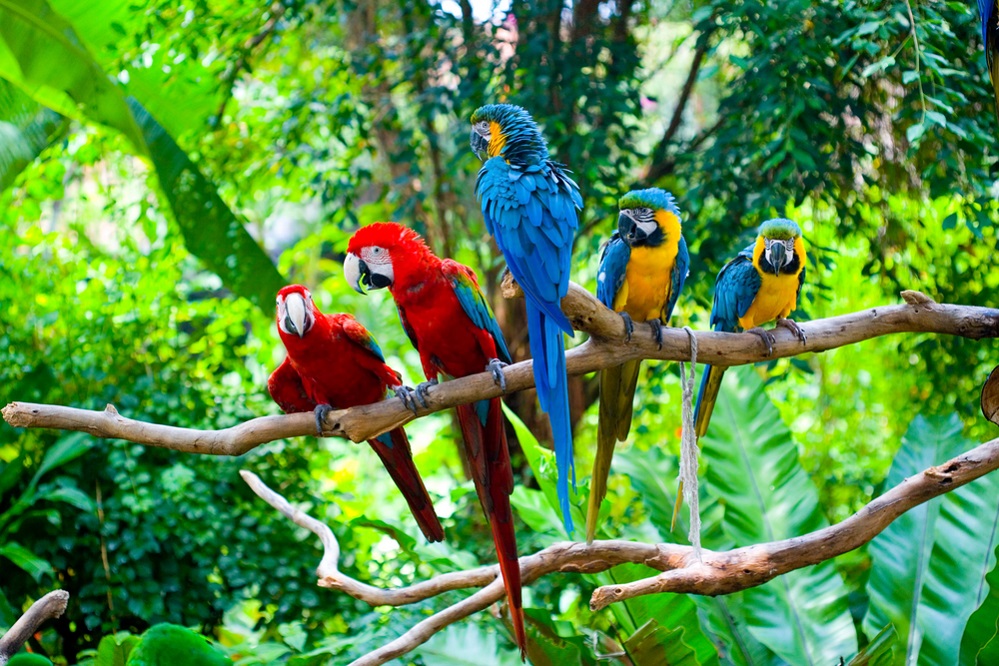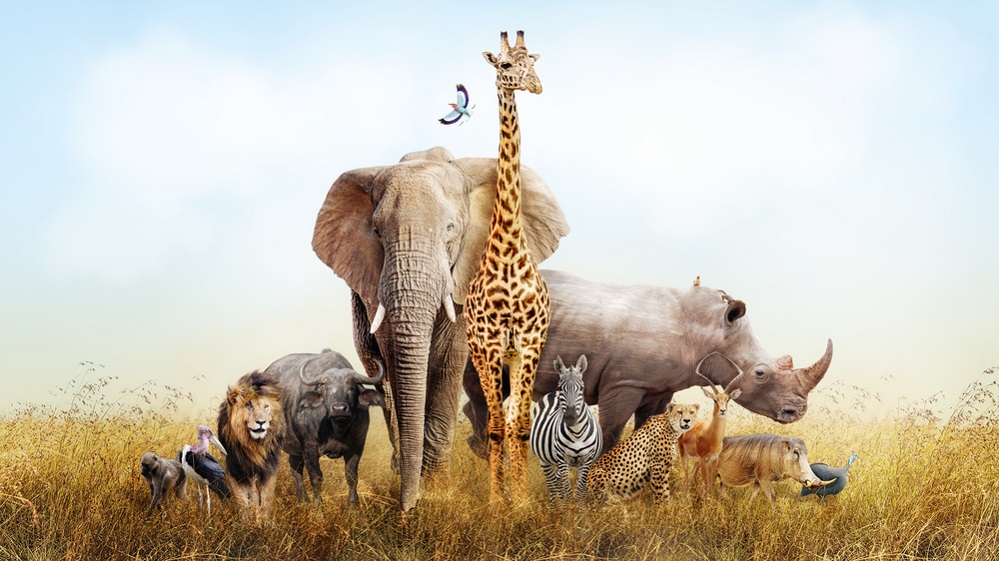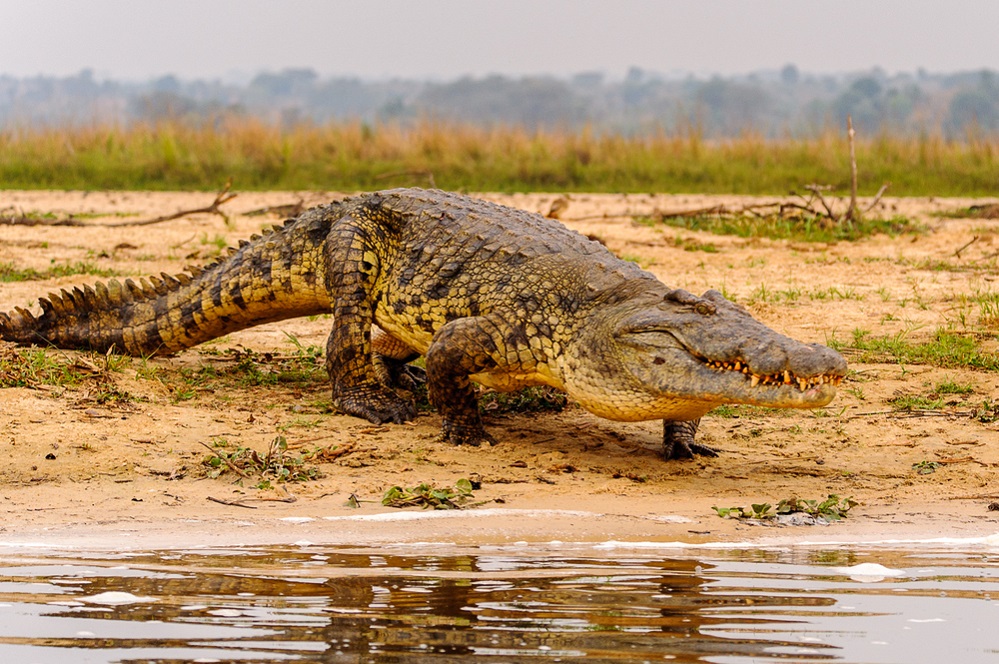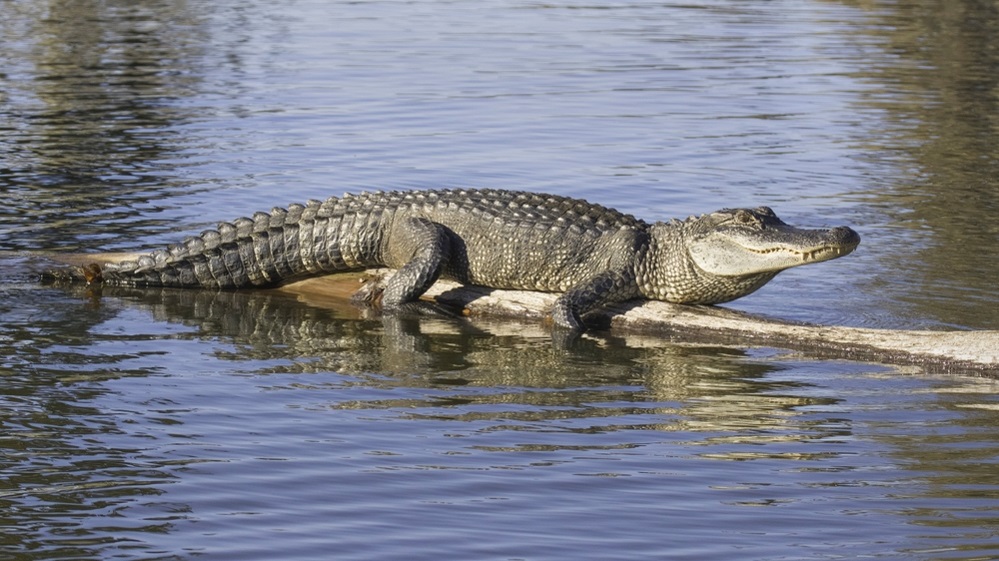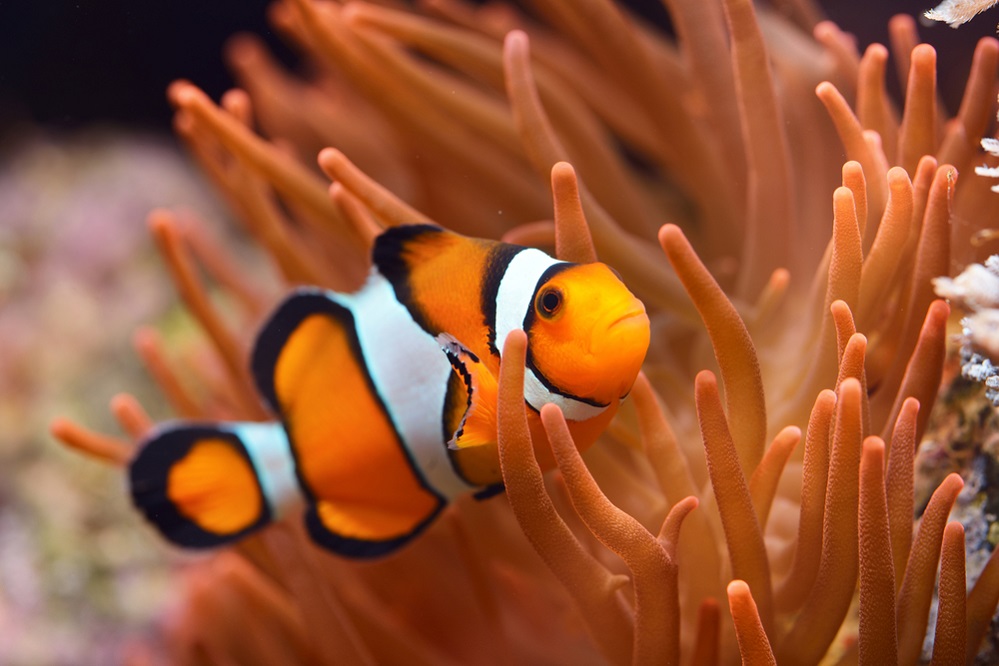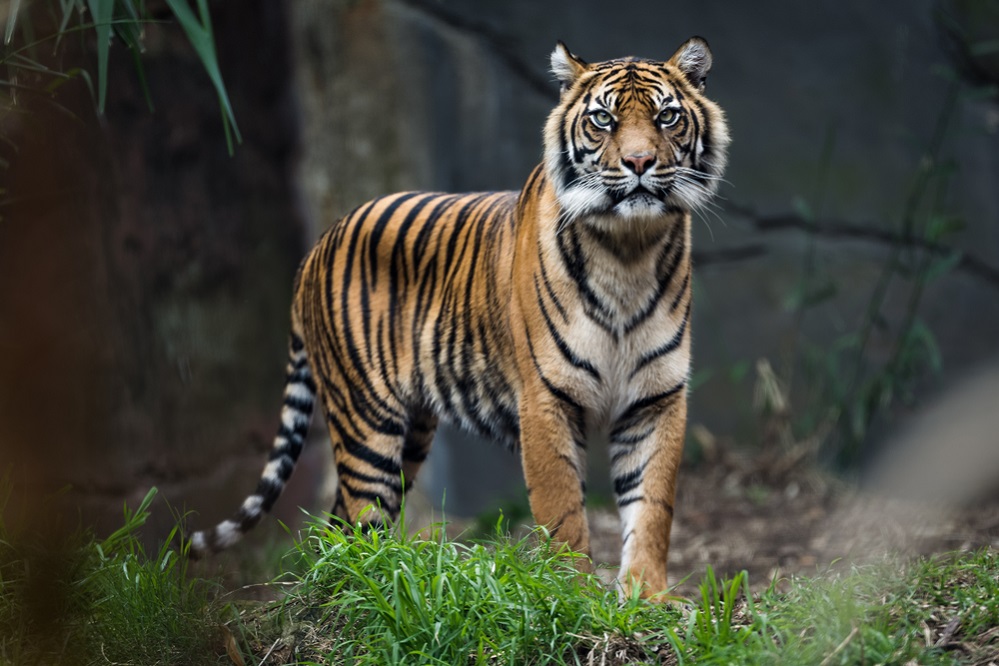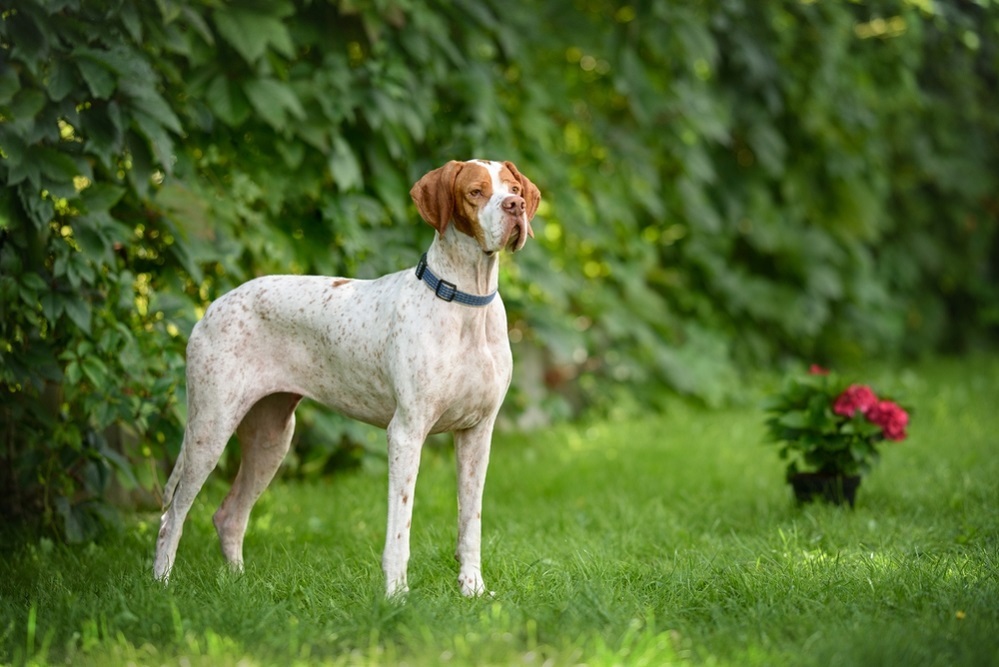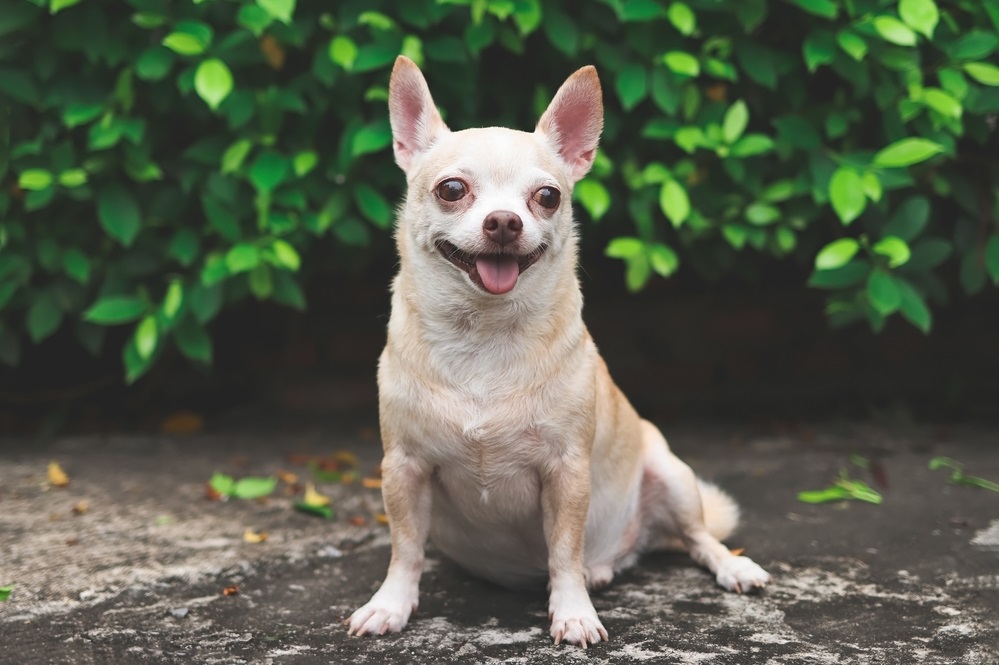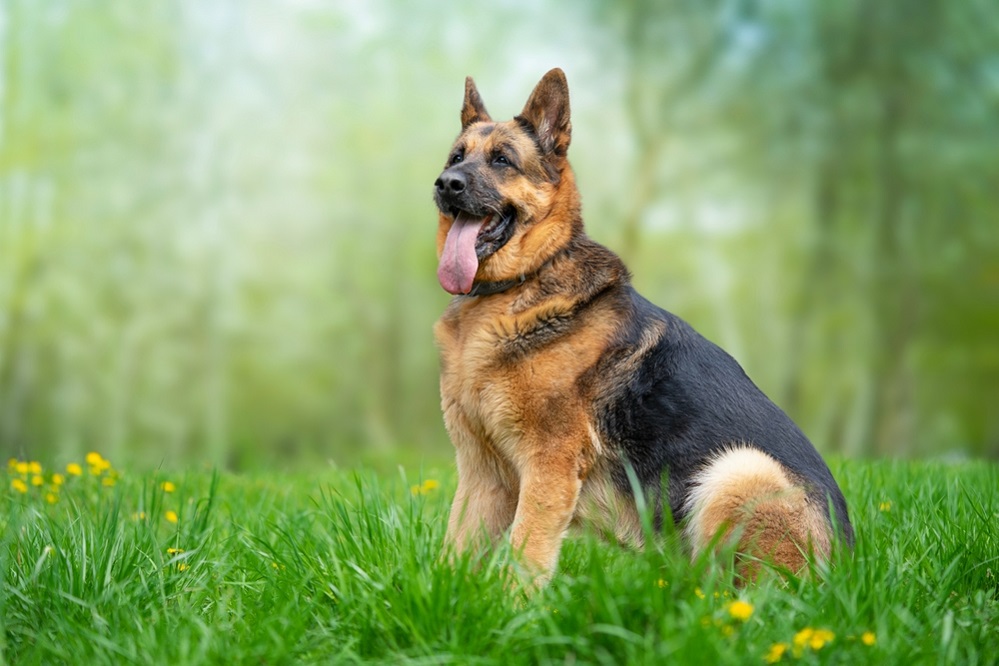Macaws, renowned for their striking appearance, boast large beaks, bright and colorful feathers, and elegant long tails, making them captivating and exotic avian companions. Recognized for their intelligence and friendly nature, most species of macaws serve as excellent companions.
Macaws are known as the “New World’s Parrot” due to their relatively recent addition in the avian world, compared to the well-established African Gray parrots, which were formally identified in 1758. Macaws are now found in many parts of the world and have become popular domestic pets due to their charming personalities and stunning beauty.
The hyacinth macaw is the largest parrot in the world and is known as the “gentle giant” of the macaw family due to its affectionate and warm personality. In this comprehensive article, we will delve deep into the background and characteristics of this remarkable bird.
Macaw Appearance
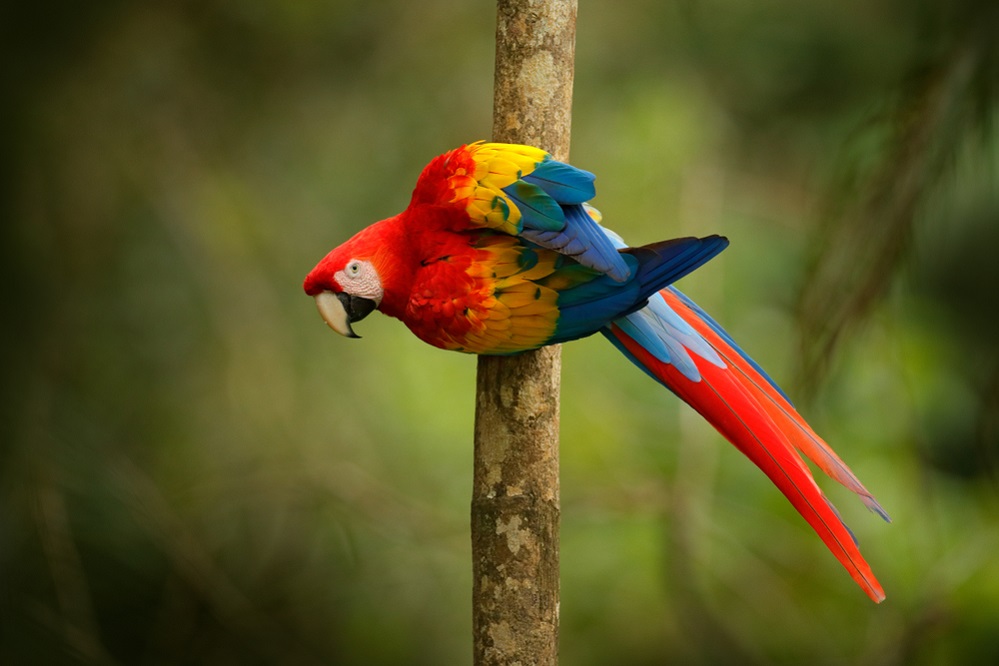
Macaws leave a lasting impression with their dazzling colors, impressive size, and captivating presence. These iconic birds never fail to inspire wonder and admiration. Their vibrant plumage showcases a spectrum of colors, often blending reds, blues, greens, yellows, blacks, and whites in unique combinations.
Each species exhibits its own unique palette, further adding to their charm. With their long, elegant tail feathers and facial patches of bare skin around their eyes, which range from white and pink to black, macaws exude distinctive allure. As the largest members of the parrot family, macaws vary significantly in size among species. They can measure anywhere from 14 to 42 inches in length, from the tip of the beak to the end of the tail.
Hyacinth macaws, the largest of all parrots, can reach up to 40 inches in length, while the smallest Hahn’s macaw measures around 14 inches long. Macaws possess strong, curved beaks and zygodactyl feet, meaning two toes facing forward and two toes facing backward.
Scientific Classification of Macaws

Domain
Eukaryota
Kingdom
Animalia
Phylum
Chordata
Class
Aves
Order
Psittaciformes
Family
Psittacidae
Subfamily
Arinae
Genus
Ara
Facts About Macaws
Here are some interesting facts about macaws:
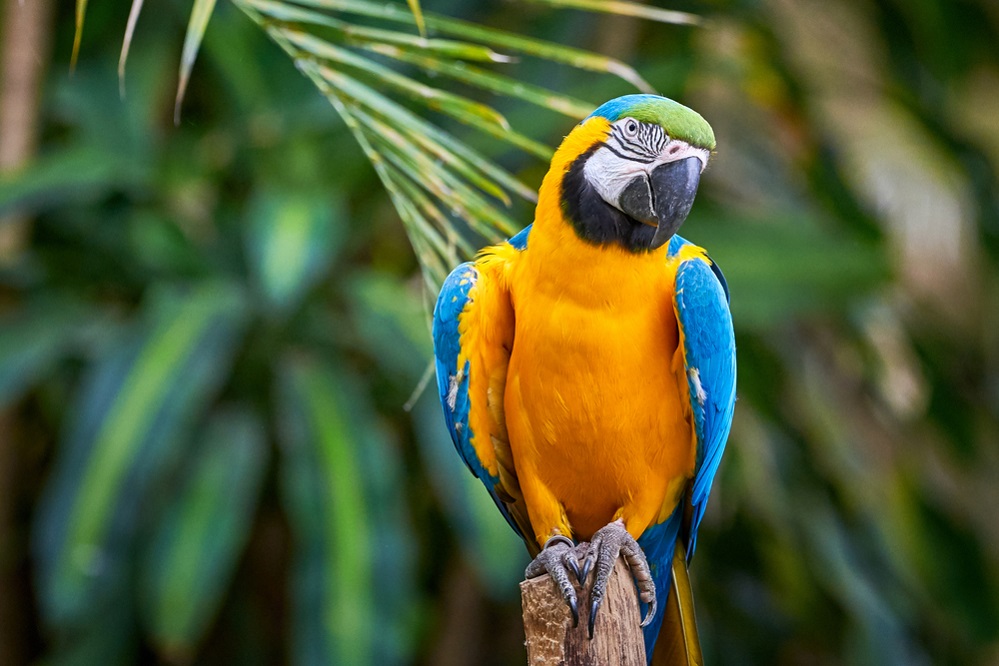
- The Hyacinth Macaw, a species of Macaw, holds the title of being the largest parrot in the world. It can reach up to 40 inches in length and weigh up to 1.7kg.
- Macaws can live up to 60 years or more, even in the wild.
- The 114-year-old Macaw, Charlie, is said to be the longest-living Macaw.
- The bond between the pair is so strong that when they fly in a flock together, their wings almost touch.
- There are over 18 recognized species of macaws.
- Macaws are highly intelligent birds with keen problem-solving abilities.
- Macaws have held cultural significance throughout Central and South America for centuries.
- Macaws use their feet, beak, and tongue to explore new objects.
Macaw Species and Scientific Name
There are over 18 recognized species of macaws:
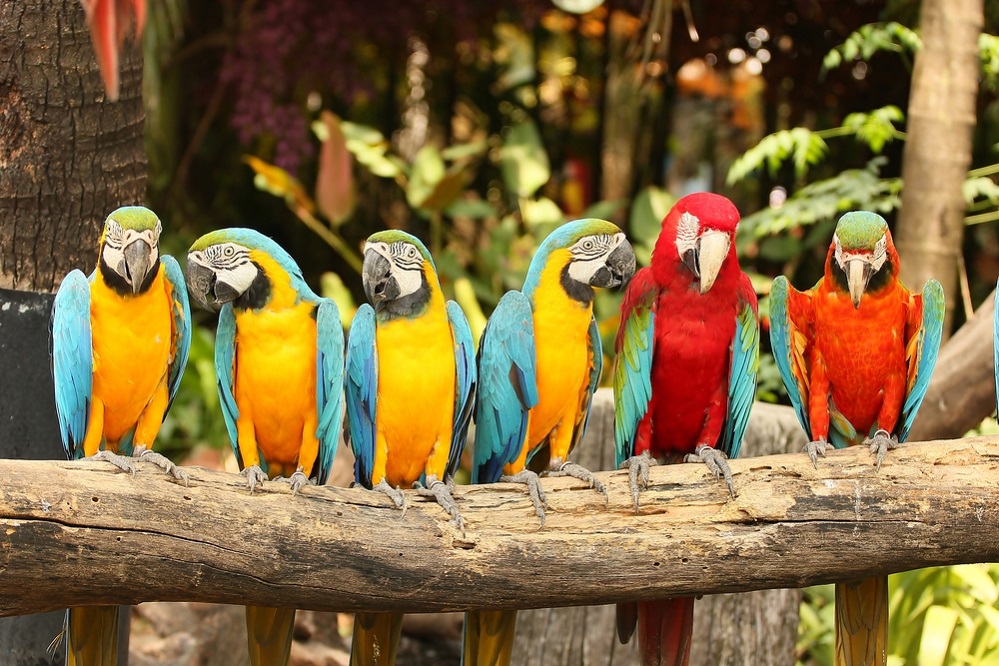
- Scarlet Macaw (Ara macao)
- Red-and-green Macaw (Ara chloropterus)
- Blue and Gold Macaw (Ara ararauna)
- Blue-throated Macaw (Ara glaucogularis)
- Red-fronted Macaw (Ara rubrogenys)
- Green-winged Macaw (Ara chloropterus)
- Military Macaw (Ara militaris)
- Chestnut-fronted Macaw (Ara severus)
- Illiger’s Macaw (Ara maracana)
- Great Green Macaw (Ara ambiguus)
- Buffon’s Macaw (Ara ambiguus)
- Hyacinth Macaw (Anodorhynchus hyacinthinus)
- Glaucous Macaw (Anodorhynchus glaucus)
- Lear’s Macaw (Anodorhynchus leari)
- Spix’s Macaw (Cyanopsitta spixii)
- Blue-headed Macaw (Primolius couloni)
- Blue-winged Macaw (Primolius maracana)
- Yellow-collared Macaw (Primolius auricollis)
Famous Macaw Species
Here are three popular macaw species that are often preferred as pets:
Hyacinth Macaw (Anodorhynchus hyacinthinus)

Renowned for its impressive size and regal presence, the Hyacinth Macaw holds the distinction of being the largest among all macaw species. The Hyacinth Macaw is highly prized as a pet for its gentle temperament and beautiful cobalt-blue plumage.
Scarlet Macaw (Ara macao)

Recognized for its brilliant red, blue, and yellow feathers, the Scarlet Macaw is a symbol of beauty and elegance. These majestic birds typically reach lengths of about 32 inches and weigh approximately 2.2 pounds. Known for their intelligence and social nature, Scarlet Macaws establish strong connections within their flock and with their caregivers.
Blue and Gold Macaw (Ara ararauna)
Bird enthusiasts favor the Blue and Gold Macaw for its striking blend of vibrant blue and golden yellow feathers, coupled with its remarkable intelligence. Known for establishing deep connections with both human caregivers and fellow flock members, these macaws thrive in environments offering mental stimulation and social interaction. Moreover, they require dedicated care and attention due to their high level of intelligence.
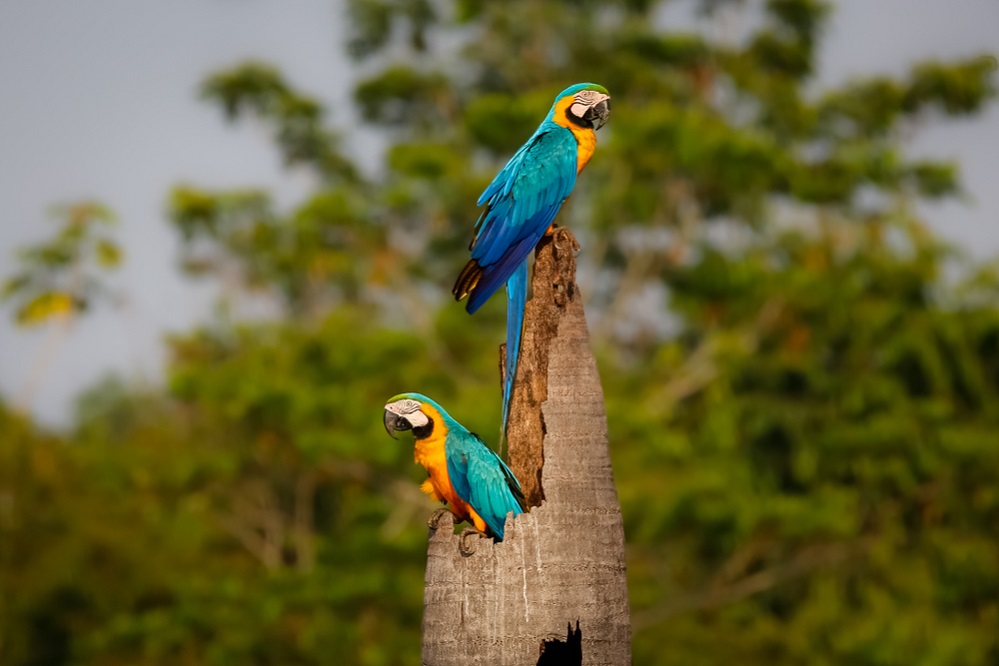
Macaw Extinct Species
There are 5 hypothetical extinct species of macaws:
- Lesser Antillean macaw
- Jamaican red macaw
- Martinique macaw
- Jamaican green-and-yellow macaw
- Dominican green-and-yellow macaw
Where to Find Macaws
Macaws, belonging to the family Psittacidae, are native to the tropical forests of Central and South America.
Blue and Gold Macaw (Ara ararauna) are native to Central and South America, countries include: Panama, Brazil, Bolivia, and Paraguay.
Red-and-green Macaw (Ara chloropterus) are native to parts of South America, countries include: eastern and central Brazil, northern Argentina, and Paraguay.
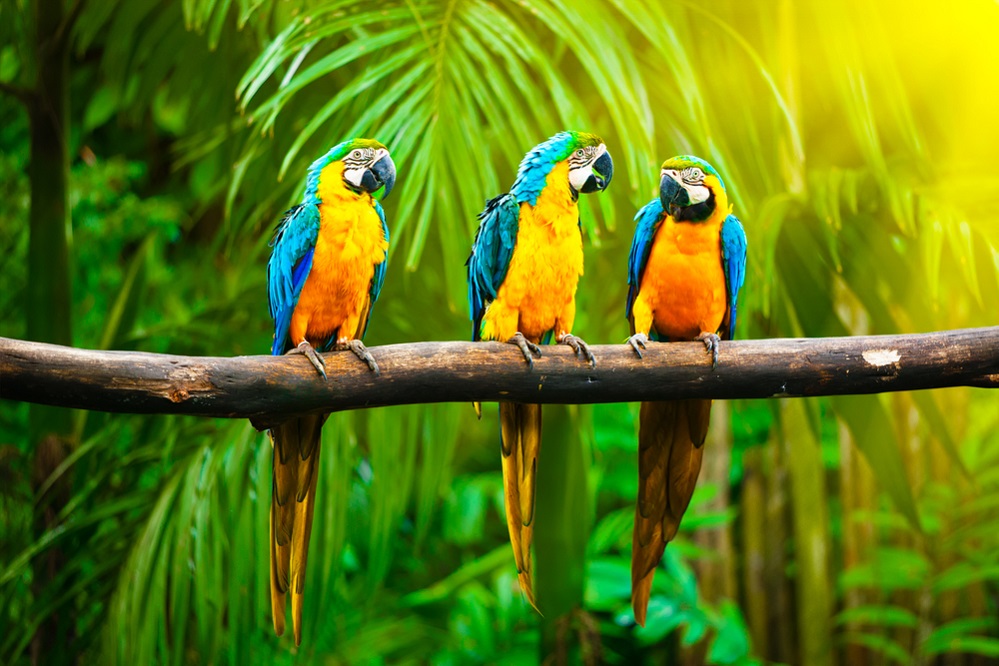
Scarlet Macaw (Ara macao) are native to Central and South America, countries include: Costa Rica, Panama, Colombia, Ecuador, Venezuela, Guatemala, Honduras, Nicaragua, Bolivia, Brazil, Mexico, Belize, and Peru.
Hyacinth Macaw (Anodorhynchus hyacinthinus) are found in Brazil, Pantanal region, Bolivia, and Paraguay.
Military Macaw (Ara militaris) are found in Mexico, Central America, South America, Colombia, Venezuela, and Ecuador.
Great Green Macaw (Ara ambiguus) are native to Central and South America, countries include: Costa Rica, Panama, Colombia, Ecuador, and Venezuela.
Red-fronted Macaw (Ara rubrogenys) and Blue-throated Macaw (Ara glaucogularis) are found in the small region of Bolivia.
Macaw Habitat

The natural habitat of macaws is found within the lush tropical forests of Central and South America. These majestic birds thrive in a variety of habitats, ranging from dense rainforests to open grasslands and grassy woodland-type areas. They are also found in lowland tropical forests, where the rich vegetation provides ample food sources and nesting sites.
In addition to rainforests, macaws can be spotted in savannas, where they navigate through the grassy expanses in search of fruits, seeds, and nuts. They are also known to inhabit mangroves, utilizing the coastal ecosystems for foraging and roosting. Palm swamps and forests are favored habitats for some macaw species, where they rely on palm trees for both food and shelter.
Gallery forests along rivers and waterways provide essential corridors for macaws to travel. Humid forests, characterized by high levels of rainfall and moisture, are another preferred habitat for these birds. Macaws are adaptable creatures and can also be found in lowland areas and forest edges.
Are Macaws Endangered?
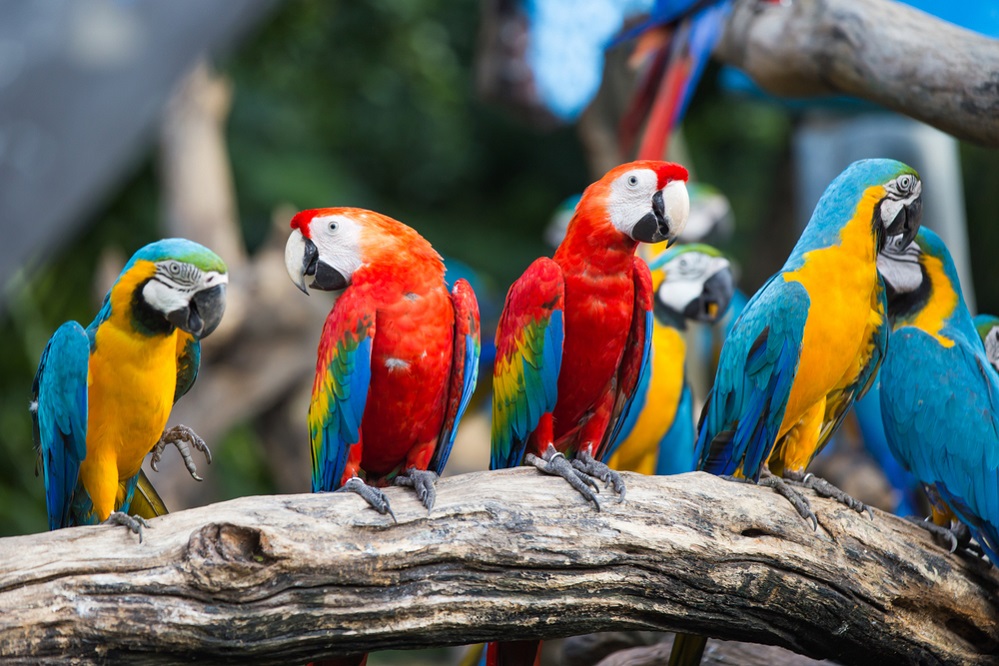
Sadly, many species of macaws are endangered or face threats to their survival. Spix’s Macaw (Cyanopsitta spixii), Glaucous Macaw (Anodorhynchus glaucus), and Lear’s Macaw (Anodorhynchus leari) are critically endangered, with the possibility of being extinct in the wild.
Additionally, the Scarlet Macaw, Blue-throated Macaw, and Red-fronted Macaw are considered vulnerable or near-threatened due to habitat destruction. The Hyacinth Macaw is also facing threats due to habitat loss and illegal trapping for the pet trade.
Population
The population of macaws varies significantly across species. In stable regions, there are an estimated 10,000 Blue and Gold Macaws. However, only around 2,000 Scarlet Macaws remain in the wild. Hyacinth Macaws number between 6,000 to 7,000 individuals, while Lear’s Macaws total approximately 1,300 in the wild. Sadly, Spix Macaws are extinct in their natural habitat, with fewer than 200 individuals remaining in captivity worldwide.

Predators and Threats
In their natural habitats, macaws may face potential predators such as eagles, falcons, hawks, snakes, monkeys, and occasionally larger predators like pythons, boa constrictors, jaguars, and ocelots.
Unfortunately, macaws face their primary threat from human activities, including habitat loss due to deforestation, agriculture, and urbanization, as well as the illegal pet trade and hunting. In certain areas, macaws are targeted for their feathers, meat, or body parts, which are used in traditional medicine or cultural practices.
Macaws Reproduction
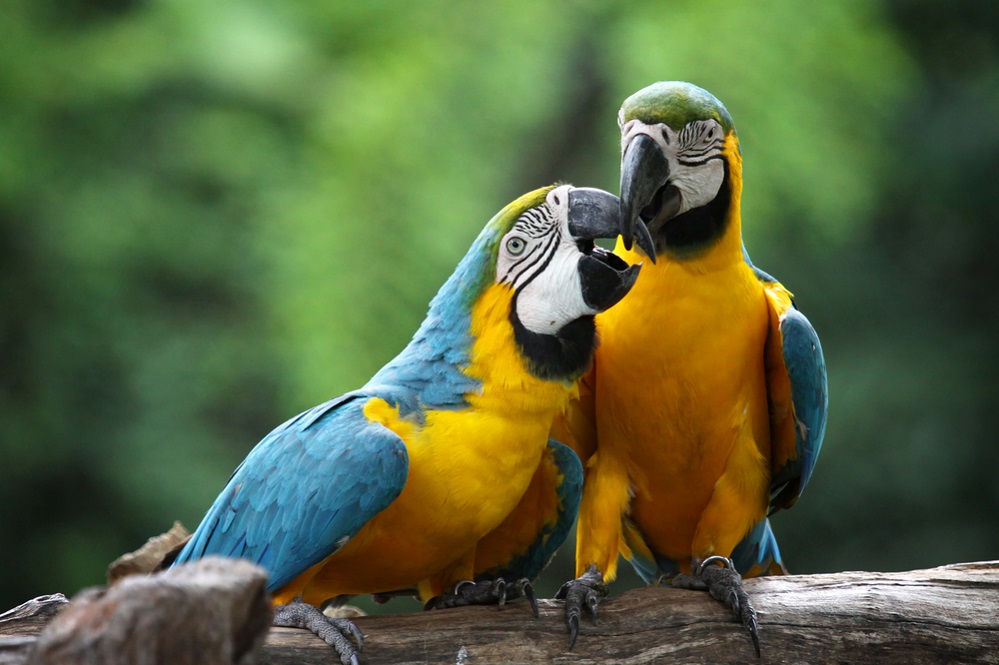
Macaws are known for their monogamous nature, forming strong pair bonds that last a lifetime. Their connection is so strong that when they fly together in flocks, their wings often nearly touch.
These birds typically reach sexual maturity between 2-10 years, varying by species. Macaw pairs breed once a year, with the female laying 1-4 eggs and incubating them for up to 28 days. During this time, the male assumes the responsibility of providing food for the female.
After hatching, the chicks initially keep their eyes closed for a few days. Covered in downy feathers initially, their full plumage develops around ten weeks of age, and they learn to fly at approximately three months old.
After successful reproduction, females typically wait for two years before mating again. Most Macaws nest in tree cavities, cliffs, and earthen banks.
Lifespan of Macaw

The lifespan of a macaw varies by species. On average, macaws can live between 40 to 60 years, both in captivity and in the wild. However, some individuals have been known to survive into their 80s and beyond. In the wild, macaws typically have shorter lifespans due to predators and environmental factors.
Macaw Diet
A macaw’s diet consists of a variety of foods, including fruits, leaves, vegetables, flowers, seeds, nuts, palm fruits, and protein sources like snails and insects. During the breeding season, they may require increased sodium and vitamin B12 intake.
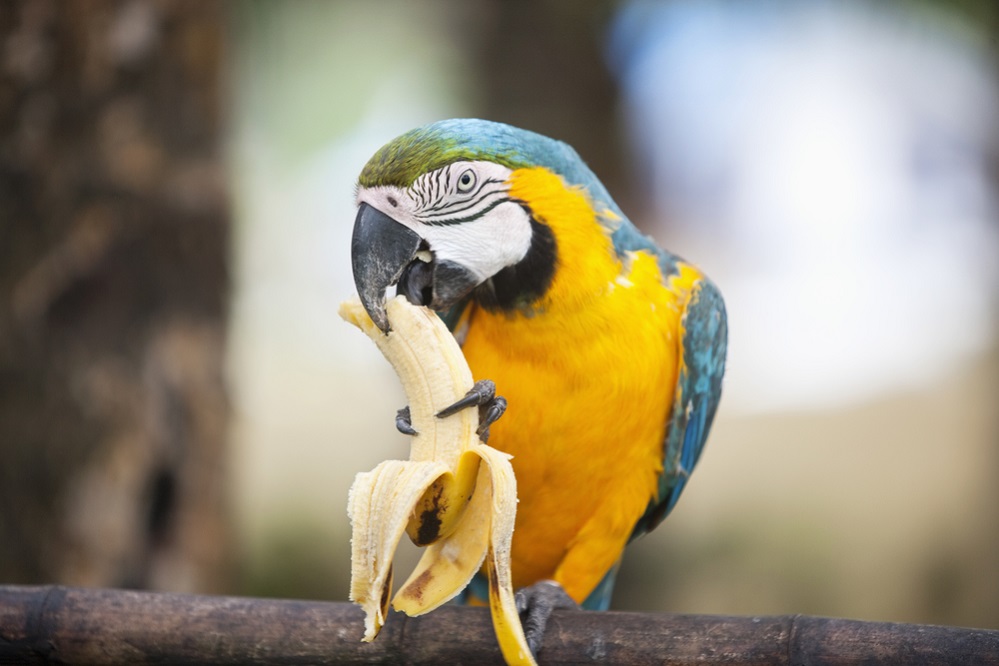
Macaws are known to fly up to 62 miles per day in search of grassy areas, typically foraging twice daily, once in the morning and again in the afternoon. Their powerful beaks enable them to crack open almonds, brazil nuts, and similar nuts.
A healthy macaw consumes approximately 10 to 15 percent of its body weight daily. While offering your macaw a small portion of your meal is acceptable, it’s important to avoid foods containing chocolate, caffeine, salt, or sugar. In the wild, macaws tend to consume diets higher in fat compared to companion macaws.
Relations With Humans
Macaws are highly desired for their vibrant and colorful feathers by bird enthusiasts. They hold significant cultural and spiritual importance for indigenous communities in Central and South America, often depicted in traditional art and revered for their symbolic value. Kept as pets and companions for centuries, macaws are prized for their stunning beauty, intelligence, and remarkable ability to talk.
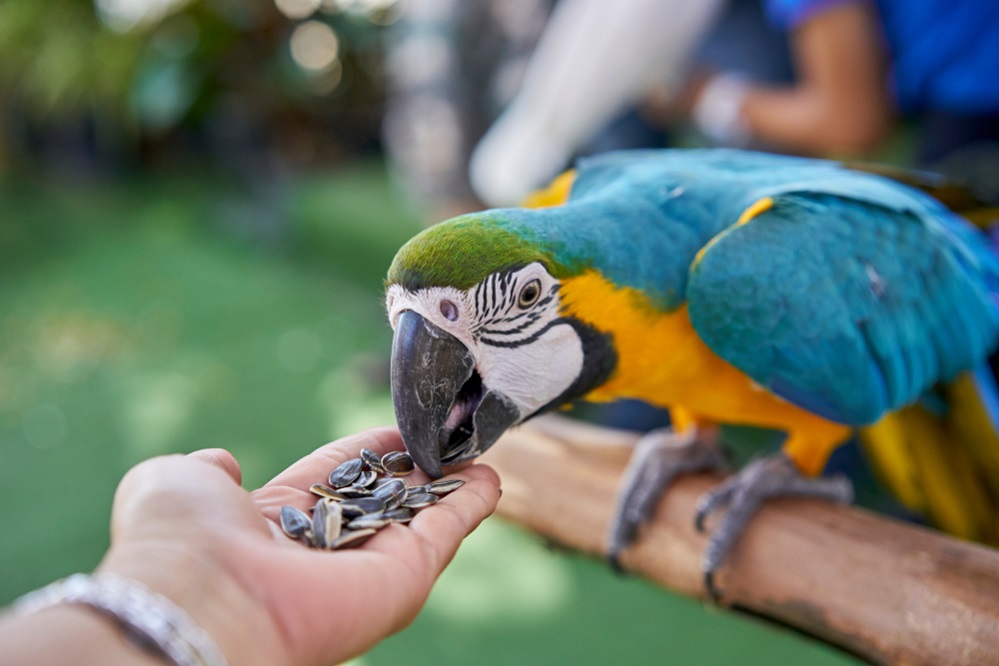
Common Health Problems in Macaw
Macaws are generally resilient and have long lifespans. While they can encounter physical health issues, their primary concern often revolves around emotional well-being. Some common diseases that are found in macaws include:
Polyomavirus is a viral infection which can cause conditions like weight loss, lethargy, and abnormal feather development.
Proventricular Dilatation Disease (PDD) is a viral infection that affects the nervous and digestive systems of Macaws.
Psittacosis (Parrot Fever) is a respiratory disease which can cause difficulty in breathing, nasal discharge, and lethargy.
Aspergillosis is a fungal infection and its symptoms include difficulty breathing, wheezing, and coughing. However, it is common for a macaw to sneeze a few times a day as a natural mechanism to clear dust or dander from its nostrils.
Feather Picking is a behavioral disorder that can be caused by stress and boredom.
FAQs
How Many Genera Are There in the Macaw Family?
The macaw family comprises six genera: Anodorhynchus, Ara, Cyanopsitta, Orthopsittaca, Primolius, and Diopsittaca.
Are Macaws Herbivores, Carnivores, or Omnivores?
Macaws are omnivores which means they consume both plants and animals.
Do Macaws Talk?
Yes, macaws are capable of mimicking human speech and can be trained to learn words and phrases.
Are Macaws Noisy?
Yes, Macaws can be noisy birds, especially during the morning and evening.
What Is the Flying Speed of a Macaw?
Macaws have the capability to fly at speeds ranging from 35 to 40 miles per hour.
What Is the Price Range for a Macaw in the United States?
In the United States, the typical price range for macaws varies from approximately $1,000 to $5,000 on average.
Final Words
It is our collective responsibility to ensure the preservation of macaws and prevent their extinction. Through conservation efforts, education, and advocacy campaigns, we can collectively work towards safeguarding the future of these magnificent birds. By engaging communities, governments, and stakeholders at local, national, and international levels, we can advocate for policies and actions that prioritize the protection and well-being of these colorful birds.

